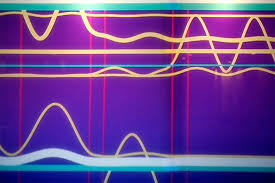
An atom gives off energy and causes many other atoms in its vicinity to emit light as well. This phenomenon is called 'superradiance'. For the first time, this phenomenon has now bean measured in a solid-state system.

Physicists have now demonstrated the world-first simulation of a chemical bond using trapped ion qubits, one of the most promising pathways to full-scale quantum computing.

The agency just launched the Cold Atom Lab, a box that takes advantage of microgravity aboard the International Space Station and creates a temperature roughly 10 billion times colder than the vacuum of space.

Physicists have uncovered hints of a time crystal. Time crystals, first identified in 2016, are different from ordinary crystals, - their atoms spin periodically, first in one direction and then in another.

Now three independent European research groups have managed to entangle not just a pair of particles, but separated clouds of thousands of atoms.

The researchers managed to bring the motions of two individual vibrating drumheads -- fabricated from metallic aluminium on a silicon chip -- into an entangled quantum state.

Physicists have identified a new state of matter whose structural order operates by rules more aligned with quantum mechanics than standard thermodynamic theory.

Scientists have created, for the first time a three-dimensional skyrmion in a quantum gas. The skyrmion was predicted theoretically over 40 years ago, but only now has it been observed experimentally.

Surprisingly, a quintessential equation of quantum mechanics emerges while studying astronomical disks of orbiting material.

Physicists surprised when their theoretical model pointed to the existence of a never-before-seen material in a different realm of physics -- that of topological quantum materials.

Scientists achieve long storage times for photonic quantum bits which break the lower bound for direct teleportation in a global quantum network.

Researchers have established a new world efficiency record for quantum dot solar cells, at 13.4 percent.

Physicists create optical 'wells' for a super-photon for the first time.

Scientists think that might be the case, and are looking for a source of extra energy that could generate the magnetic field they observe.

Researchers in China have teleported a photon from the ground to a satellite orbiting more than 500 kilometers above.